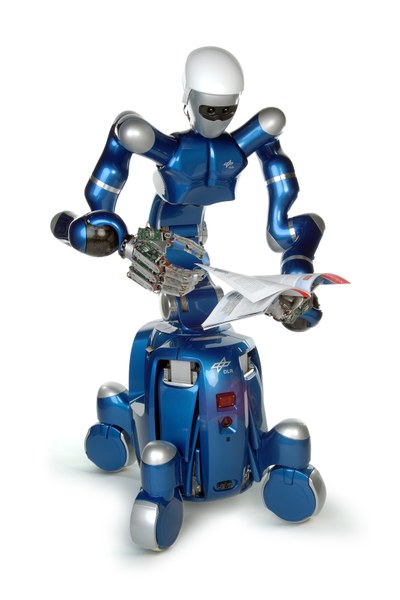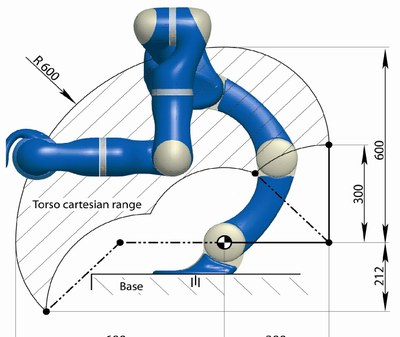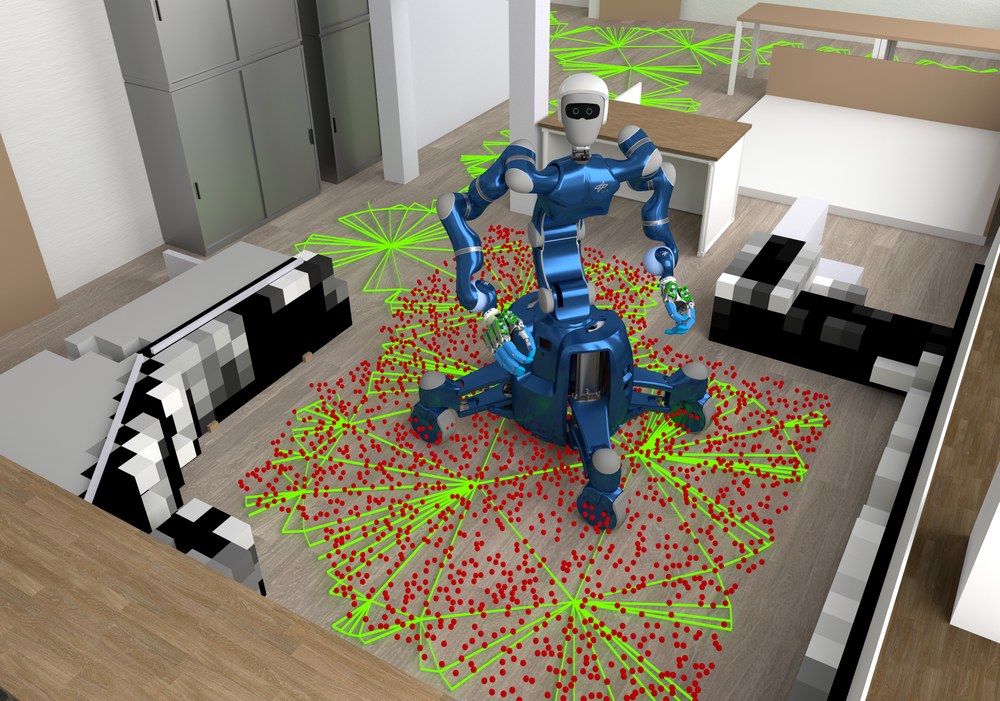Rollin' Justin

The humanoid robot Rollin' Justin is a platform for research in service robotics. Areas of application for the system are, in particular, household work and assisting astronauts in space.
The robot was first presented to the public in 2008.
technical data
Size: | Adult human (1.91 m) |
Weight: | approx. 200 kg |
Degrees of freedom: | 51 (platform: 8, arms: 2 × 7, hands: 2 × 12, neck: 2, torso: 3) |
Nominal load capacity: | 20 kg |
Energy supply: | Battery with operating time of > 60 min |
Speed: | 2 m/s or 7.2 km/h |
Working space: | From the floor to a height of 2.7 m |
Special features: |
|
System description
Rollin' Justin’s compliant light-weight arms and four-finger hands make it an ideal platform for research into sensitive, ambidextrous manipulation. The mobile base allows autonomous operation over a long range. Motion detection sensors and stereo cameras enable 3D reconstruction of the robot’s environment. Unstructured, variable and dynamic environments require the robot to act independently and without human support. On the other hand, the robot must be able to work safely with people. Its multiple actuated degrees of freedom allow Rollin' Justin to pursue several goals at the same time while complying with a task hierarchy. For example, the robot can serve beverages while observing the environment, moving without singularity, avoiding collisions, compliantly responding to collisions with the environment – all without spilling the drinks.
Selected publications
You can find a complete list of all publications associated with Rollin' Justin on our Publications Page. A selection of recent publications:
- Schmaus et al., “Knowledge Driven Orbit-to-Ground Teleoperation of a Robot Coworker”, IEEE Robotics and Automation Letters, 5 (1), Seiten 143-150. IEEE - Institute of Electrical and Electronics Engineers. DOI: 10.1109/LRA.2019.2948128 ISSN 2377-3766, 2020.
- Bauer et al., “Probabilistic Effect Prediction through Semantic Augmentation and Physical Simulation”, In: IEEE International Conference on Robotics and Automation ICRA, Seiten 9278-9284. IEEE International Conference on Robotics and Automation (ICRA), 31. May - 31. Aug 2020, Paris, France. DOI: 10.1109/ICRA40945.2020.9197477, 2020.
- Vogel et al., "An Ecosystem for Heterogeneous Robotic Assistants in Caregiving", accepted for publication in IEEE Robotics and Automation Magazine (RAM), 2020.
- Sewtz et al., “Robust MUSIC-Based Sound Source Localization in Reverberant and Echoic Environments”, In: 2020 IEEE International Conference on Intelligent Robots and Systems. IEEE/RSJ International Conference on Robots and Systems IROS, Las Vegas, USA, 2020.
- Leidner, “Cognitive Reasoning for Compliant Robot Manipulation”, Springer Tracts in Advanced Robotics, 127. Springer. ISBN 978-3-030-04857-0. ISSN 1610-7438, 2019.
- Lii et al., „The Robot as an Avatar or Co-worker? An Investigation of the Different Teleoperation Modalities through the KONTUR-2 and METERON SUPVIS Justin Space Telerobotic Missions”, In: Proceedings of the International Astronautical Congress, IAC. 69th International Astronautical Congress (IAC), Bremen, Germany, 1-5 Oct 2018, Bremen, Germany, 2018.








